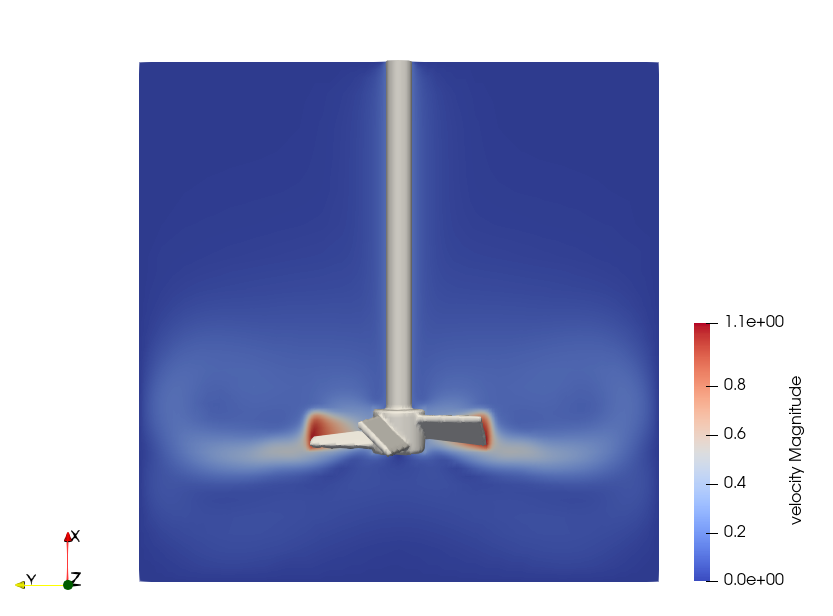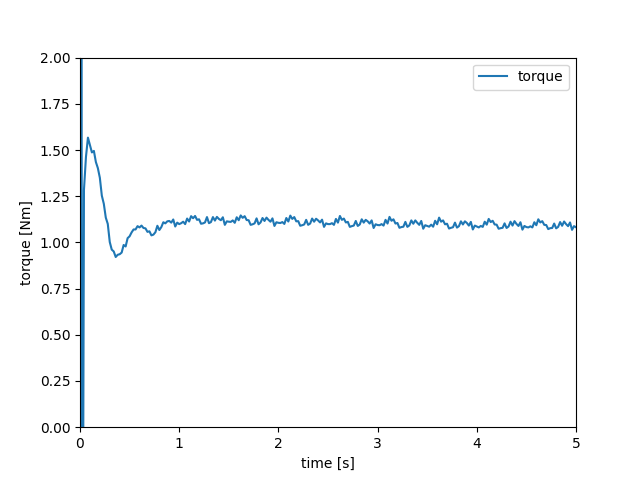3D Mixer with Pitched-Blade Turbine Impeller Using OpenCascade Sharp-Immersed Boundary#
The mixing of stirred tanks is a common chemical engineering problem that can be tackled through immersed boundary simulation. This example, a variation of 3D Mixer with Pitched-Blade Turbine Impeller Using Composite Sharp-Immersed Boundary, illustrates how the transient flow in a stirred-tank can be simulated by Lethe using the Sharp-Immersed Boundary formulation with an OpenCasacade shape from a .step file.
Features#
Solvers:
lethe-fluid-sharpTransient problem
Rotating complex solid, defined by a
.stepfile using the OpenCascade shape, modeled with sharp immersed boundary
Files Used in this Example#
Both files mentioned below are located in the example’s folder (examples/sharp-immersed-boundary/3d-opencascade-mixer-with-pbt-impeller).
Parameter file:
mixer.prm.stepfile:impeller.step
Description of the Case#
In this example, we simulate a mixer using a PBT impeller through the usage of a .step file with the OpenCascade shape feature of the sharp immersed boundary solver.
Creation of the STEP File#
The .step file can be defined using any CAD tool available to the user. The .step file must represent a solid. It is preferable to avoid .step files that represent shells, composite of solids or a compound of objects.
Tip
Use the union tool at your disposal to avoid issues with .step files that are defined by a composite of solids. Most CAD software offers the possibility to define a solid from the union of multiple solids. Similarly, if the .step file is only defined by a shell, it is usually possible to define a solid from that shell. If your CAD tool does not allow these operations, the FreeCAD software allows you to do these operations using the part toolbox.
Parameter File#
Definition of the Shape and Its Motion#
The section defining the solid is almost the same as in 3D Mixer with Pitched-Blade Turbine Impeller Using Composite Sharp-Immersed Boundary, with the difference being the shape type and shape arguments.
subsection particles
...
subsection particle info 0
...
set type = opencascade
set shape arguments = impeller.step
end
end
Additional information on the particles parameters can be found on Sharp-Immersed-Boundary.
Results#
The velocity field obtained with this example is similar to the one obtained with the Nitsche immersed boundary and with the shape defined as a composite.

Using meter and second as the length and time unit and assuming a fluid density of \(1000 \left(\frac{\text{kg}}{\text{m}^3}\right)\) produce the following torque on impeller:
